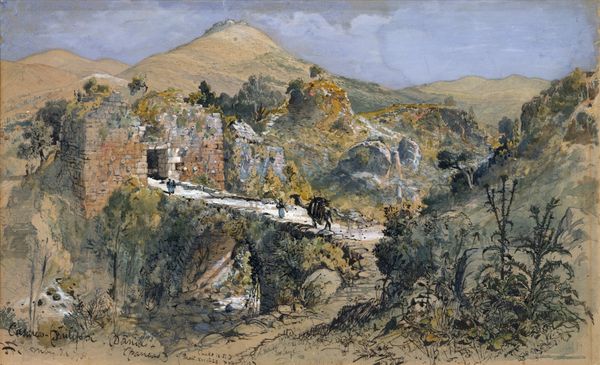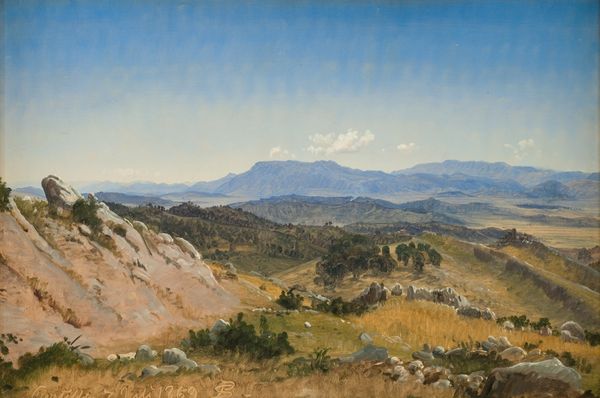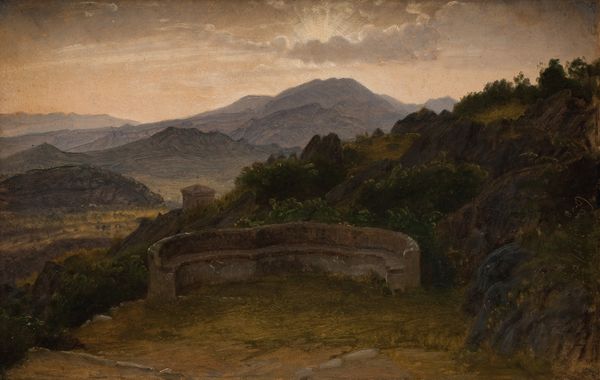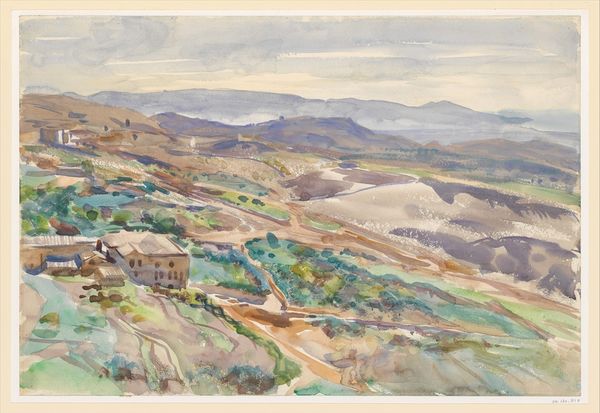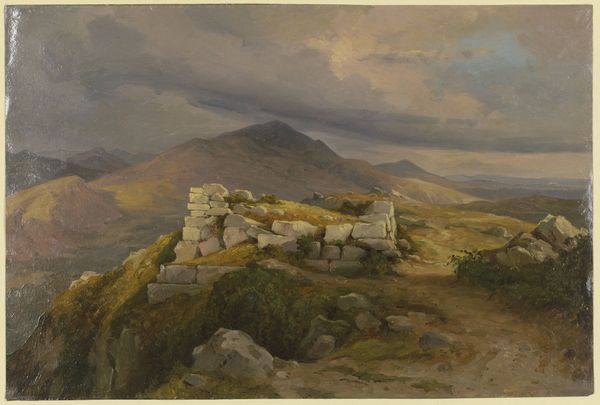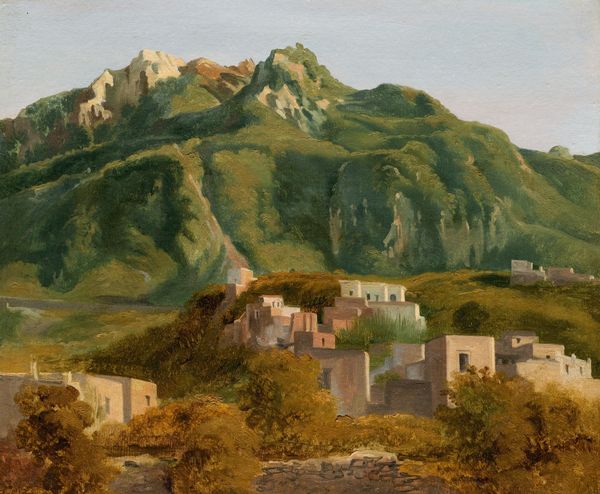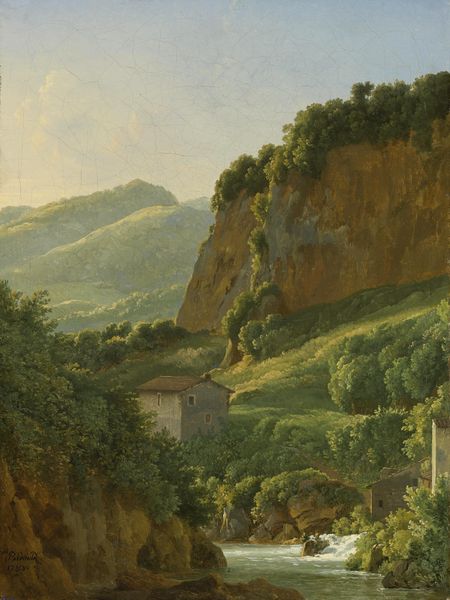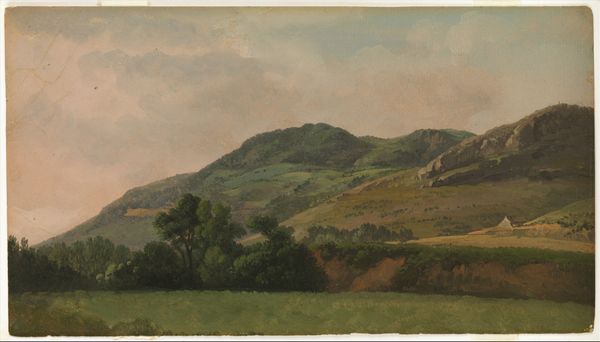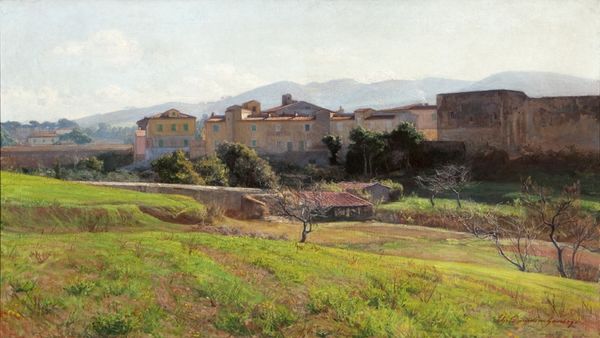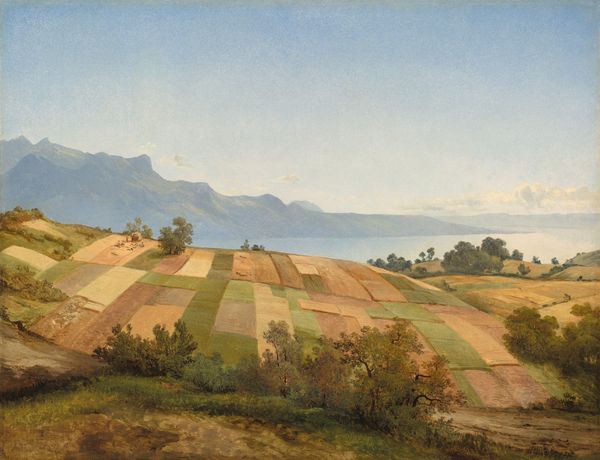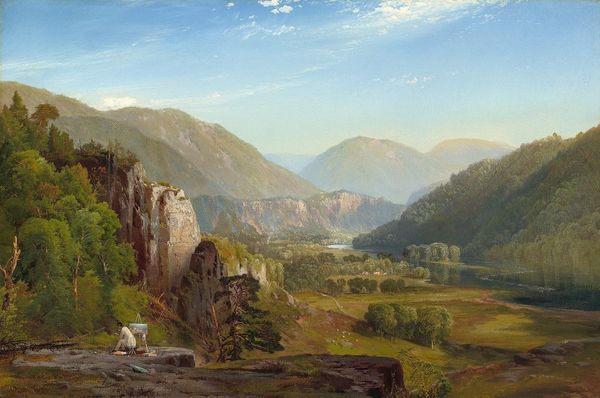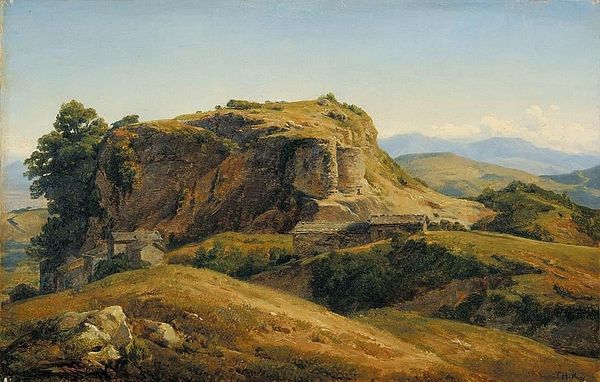
The Ruins of the Antique Theatre at Tusculum, Italy 1848
0:00
0:00
paper, canvas
#
charcoal drawing
#
possibly oil pastel
#
paper
#
oil painting
#
canvas
#
acrylic on canvas
#
landscape photography
#
naturalistic tone
#
seascape
#
painting painterly
#
watercolour illustration
#
watercolor
Dimensions: 43.5 cm (height) x 67.5 cm (width) (Netto)
Editor: So, this is "The Ruins of the Antique Theatre at Tusculum, Italy" by Thorald Brendstrup, created in 1848. Looking at the canvas, I’m immediately struck by this serene and almost melancholic feeling it evokes, contrasting the glory of what once was with the quiet decay of the present. What do you see in this piece, especially concerning the narrative being conveyed through these ruins? Curator: The ruins, particularly a theatre, act as potent symbols. What do theatres represent? Performances, stories, shared human experience, community… Tusculum’s theatre is presented as something no longer in use; its function, its cultural role, is a ghost. It evokes themes of time, loss, and memory, reminding us of the transience of civilization. What feelings arise when you consider its state of ruin in relation to the vibrant performances it once held? Editor: I see how the crumbling architecture, contrasted with the somewhat untouched natural landscape around it, heightens that sense of fleeting existence. Almost like nature is reclaiming what humans created. Curator: Precisely. That tension—between the man-made and the natural—is key. Consider how classical ruins became fashionable subjects for artists of this period. What do you think audiences derived from looking at images of the distant classical past? How did contemplating it affect them? Editor: I imagine it might have inspired reflection on their own place in history, their civilization's trajectory, maybe even a touch of romantic longing for a perceived 'golden age.' Curator: And in 1848, a period of revolutionary upheaval across Europe, that sort of contemplation must have carried a heavy weight, right? I am fascinated how Brendstrup transforms simple stones into vessels brimming with human stories and emotions that resonate across centuries. Editor: Absolutely. I never thought of it in terms of social context; now, I'm thinking of its implications as more than landscape. Thank you for that! Curator: My pleasure; these antique theatres and artworks invite that reflection!
Comments
No comments
Be the first to comment and join the conversation on the ultimate creative platform.
